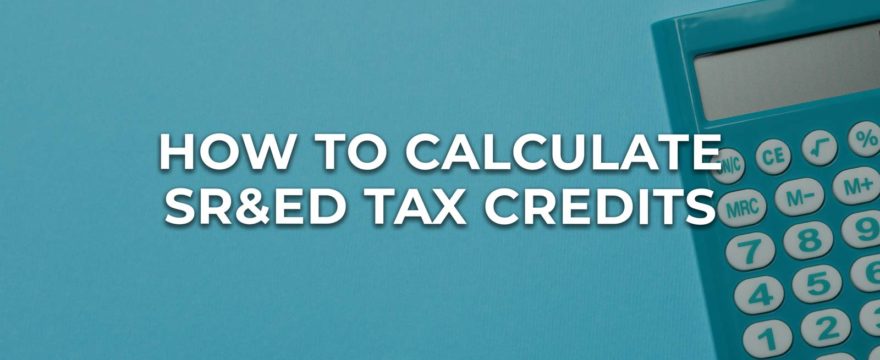
If your organization performs research and development (R&D) or other qualifying work, you may be eligible to receive Scientific Research and Experimental Development (SR&ED) tax credits. Administered by the Canada Revenue Agency, this program is the largest source of government-backed funding for R&D in the country.
The amount of SR&ED tax credits a company receives depends on the value of the qualifying activities they performed within a single tax year. For organizations that struggle to calculate their SR&ED tax credit eligibility, this guide provides a straightforward, two-step method.
Determine Your Estimated SR&ED Refund Amount
While many funding sources provide payment upfront, SR&ED tax credit refunds are paid in arrears. In other words, you submit a claim to obtain the refund after your business accrues credits through spending on eligible work. To claim SR&ED credits, you must complete and submit form T661 to the CRA. When the fiscal year ends, companies have 12 months after the income tax reporting deadline for the year to submit their SR&ED claim.
If your innovative project takes several years to complete, you should not wait until all activities conclude to submit a claim and risk going beyond the 18-month SR&ED filing deadline. In this case, you can separate eligible work by fiscal year and claim as many times as needed.
If you plan to claim SR&ED tax credits, there are five variables you need to consider:
Total Salaries
Eligible work for SR&ED tax credits falls into four general categories — basic research, applied research, experimental development, and activities that directly support the three preceding types. The three specific costs that earn you credits are payroll, materials, and sub-contracts. Capital expenditures, such as equipment and facilities, are not eligible.
To gather all payroll expenses, monitor how many hours daily each staff member is directly involved in qualifying activities. Then, multiply the total hours by their hourly pay rate. For staff members on salary, you can divide their annual wages by the hours they worked that year.
Total Contractor Expenses
While subcontractors can be individuals or firms, they must be Canadian to be eligible for your SR&ED claim. In other words, they need a SIN or HST/BN number. Once you gather all contractor expenditures, calculate 80% of the total amount. The resulting number is how much you can claim for the SR&ED tax credit.
Total Material Expenses
Two types of material costs qualify for SR&ED — items used to craft prototypes and materials consumed during experiments. You may also include the cost of shipping these materials, including customs and duties costs.
Once you analyze the costs for all three expenses, add them together to determine your total SR&ED expenditures for the year.
Location of Headquarters
Besides the Government of Canada, many provinces and territories offer their own R&D tax credits. Each region has specific guidelines regarding what percentage of eligible expenses are refundable and what types of organizations qualify. Businesses should investigate the conditions of the province or territory of their headquarters when establishing how much they can claim.
Total Applicable Amount of Other Government Assistance & SR&ED Expenditure Limit
The SR&ED program is not the only initiative the Government extends to innovative companies. The Industrial Research Assistance Program (IRAP), Canada Emergency Wage Subsidy (CEWS), Interactive Digital Media Tax Credit, and similar incentives may impact how much an organization may claim in SR&ED expenses. Therefore, you should factor in the total applicable amount of all other government financial support you receive when figuring out your SR&ED tax credit.
Organizations that qualify for these tax credits should also know their SR&ED expenditure limit. This amount differs depending on the type of business receiving tax credits, and certain conditions may cause a reduction in the expenditure limit.
Use an SR&ED Calculator
SR&ED accounting requires meticulous attention to ensure you formulate the right amount for each expense and source of government funding. Easly offers a helpful tool that provides a quick estimate of your SR&ED refund amount — the SR&ED refund calculator. Simply plug in all variables listed above to get an estimate of your refund.
Finance Your SR&ED Tax Credits with Easly
Since SR&ED tax credits are paid in arrears, it can be challenging to obtain the financial support you need to pursue R&D with the potential for ground-breaking results. By partnering with Easly, your company can gain access to your expected tax credit refund sooner. Easly Advances provide on-demand and non-dilutive capital on a schedule that suits your needs, rather than waiting for a lump-sum payment in arrears. Once you have an estimate of your annual SR&ED refund, use our Easly Cash Flow Calculator to determine how much funding you could receive from Easly in as little as two weeks.
Contact us today for more information on how to calculate SR&ED tax credits or claim SR&ED expenses.
.png)
.png)
.png)
